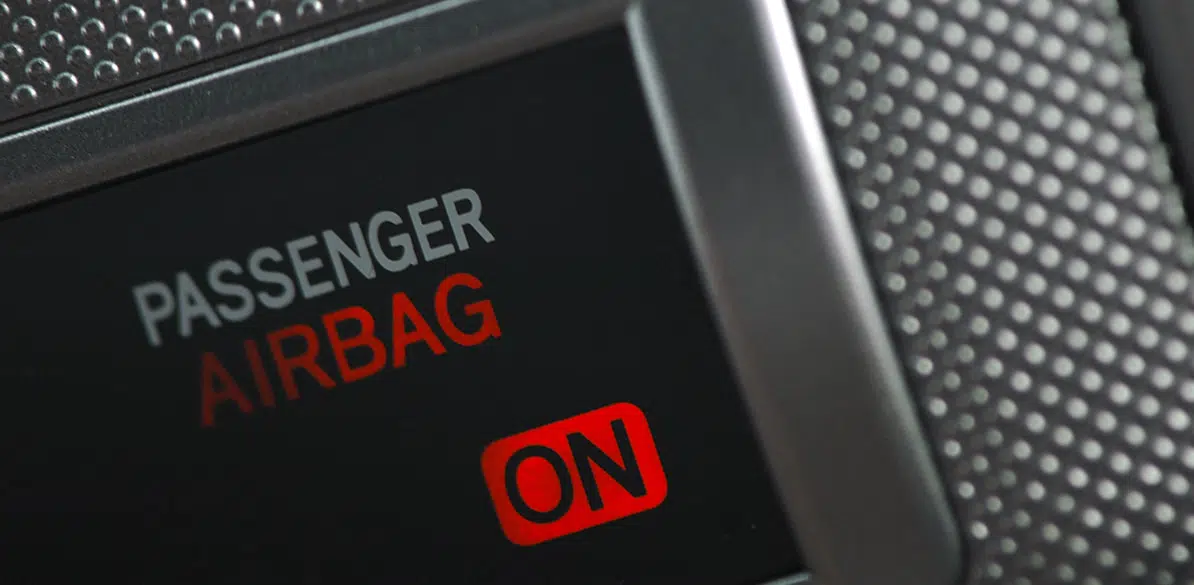Are airbags dangerous for children?

Airbag functions
The airbag is an inflatable bag of air designed to cushion the forces of impact on the head and chest in the event of an accident. To be effective, it needs to inflate and unfold before the body moves appreciably at the start of an impact, so it only has a few microseconds (0.03 seconds on average) to inflate. This causes the bag to shoot out at over 200 km/h, which means wearing a seat belt is essential to reduce the speed of the body when it collides with the airbag; otherwise the impact against the bag may cause injury.
How it affects children
For a baby or a child who is not using its corresponding restraint system properly, and is located too close to the airbag when it inflates, the front passenger airbag would pose a serious health risk. As it is intended for an adult wearing a seat belt, the inflation of an airbag could be catastrophic for a child who is not secured in the car. But if the child is properly secured in his or her child restraint system, the airbag should not pose any added risk. Some studies even point out that the airbag can improve children’s safety provided that, we must reiterate, they are traveling in correctly installed child seats.
The only obvious exceptions are rear-facing infant seats: this type of seat is totally incompatible with front airbags, since these seats are always too close to the airbag.
To remedy this incompatibility between airbags and rear-facing infant seats, it is necessary to disable the front airbag if you are going to put a baby or child in a Group 0 or Group 0+ child seat in the front passenger seat. If the airbag cannot be disabled manually, ask the vehicle manufacturer, call their helpline, or contact an official dealer to ask if it can be disabled at the dealership.
Whatever the case, to enhance children’s safety we offer the following basic tips. The first is that, as a general rule, apart from when the baby or child needs constant medical supervision (for example, due to respiratory problems), the back seat is safer than the front: if you can, avoid taking any risks and always put children in their child restraint systems in the back seats.
The second tip is that if there is no other option than for the child to travel in their child seat in the front passenger seat with an active airbag, you should put the car seat as far back as possible. Let’s just remind you that if the airbag is active, the child seat should NEVER be a rear-facing baby seat (it can only be a forward-facing seat designed for older children).
Fundación MAPFRE therefore recommends keeping children in the back seats, where they will be more protected and only affected by the side airbags or curtains, which, as they do not inflate so powerfully, do not pose the same risks as front airbags.
